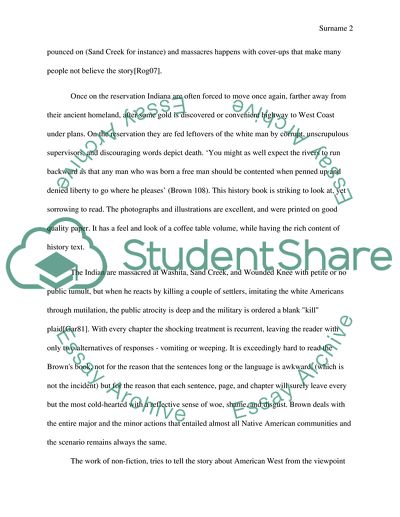Cite this document
(Indian History Of The American Research Paper Example | Topics and Well Written Essays - 1500 words, n.d.)
Indian History Of The American Research Paper Example | Topics and Well Written Essays - 1500 words. Retrieved from https://studentshare.org/history/1789893-bury-my-heart-at-wounded-knee-and-multiculturalism-issues-book-analysis
Indian History Of The American Research Paper Example | Topics and Well Written Essays - 1500 words. Retrieved from https://studentshare.org/history/1789893-bury-my-heart-at-wounded-knee-and-multiculturalism-issues-book-analysis
(Indian History Of The American Research Paper Example | Topics and Well Written Essays - 1500 Words)
Indian History Of The American Research Paper Example | Topics and Well Written Essays - 1500 Words. https://studentshare.org/history/1789893-bury-my-heart-at-wounded-knee-and-multiculturalism-issues-book-analysis.
Indian History Of The American Research Paper Example | Topics and Well Written Essays - 1500 Words. https://studentshare.org/history/1789893-bury-my-heart-at-wounded-knee-and-multiculturalism-issues-book-analysis.
“Indian History Of The American Research Paper Example | Topics and Well Written Essays - 1500 Words”, n.d. https://studentshare.org/history/1789893-bury-my-heart-at-wounded-knee-and-multiculturalism-issues-book-analysis.


